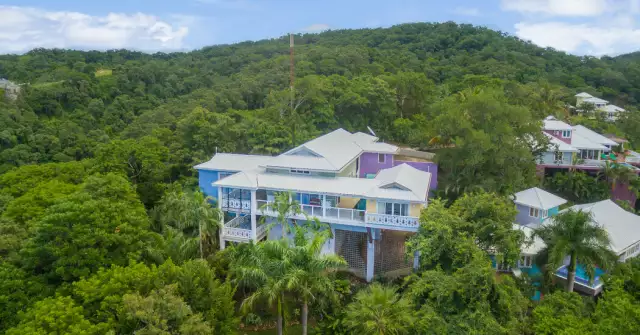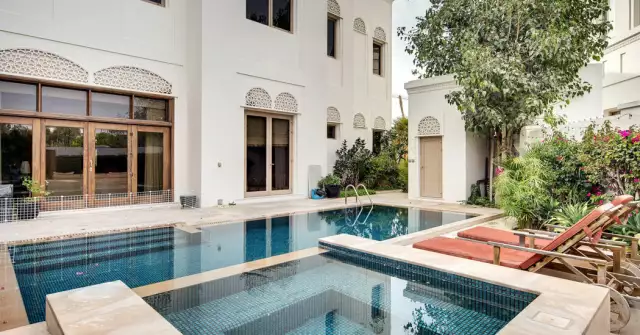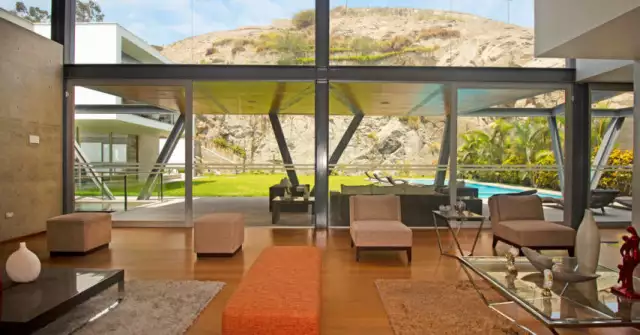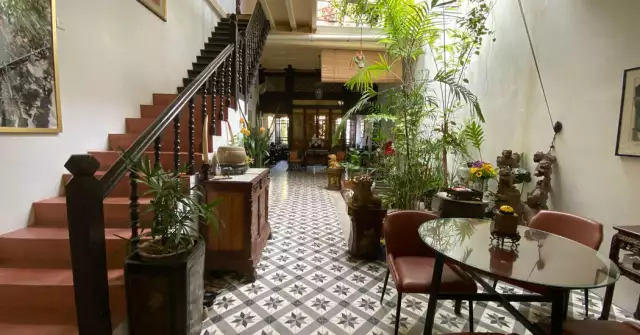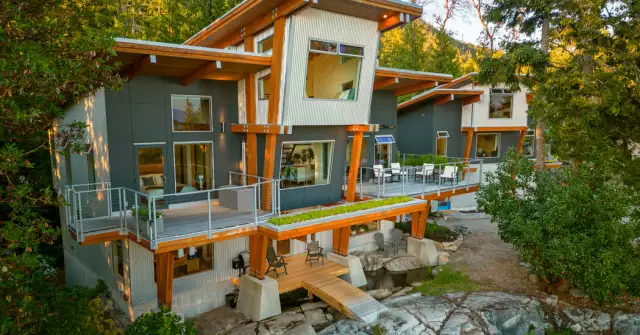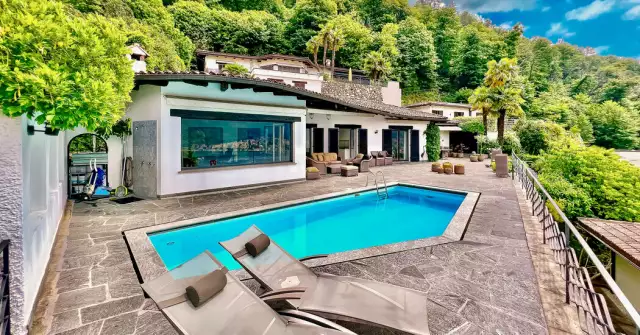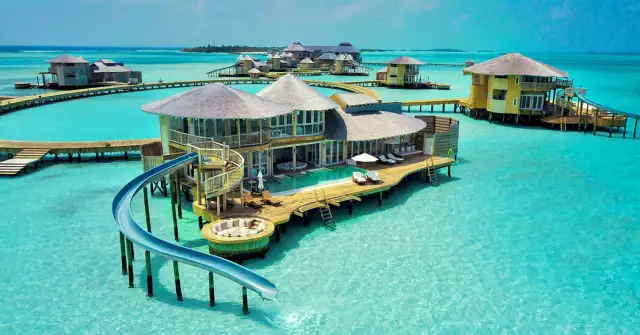House Hunting in Honduras: A Pastel Palace on Roatán for $579,000
House Hunting in Honduras: A Pastel Palace on Roatán for $579,000
A Three-Bedroom Villa off the Coast of Honduras
$579,000
This three-bedroom villa with panoramic Caribbean Sea views commands a high ridge on the northwest coast of Roatán, an island off the northern coast of Honduras.
Built in 2014 on a third of an acre at the pinnacle of a hilly neighborhood called Topridge, the two-story villa also looks out over the Mesoamerican Reef, the largest barrier reef in the Western Hemisphere, which surrounds Roatán.
“This home’s view is one of the best on the island,” said Steve Hasz, a co-owner and broker at Roatan Life Real Estate, which has the listing. “It overlooks the amazing reef we have here, which is why we have so many scuba-diving visitors.”
The 4,185-square-foot villa, painted in eye-catching pastels, is constructed of ocote pine and shiplap hardwood siding atop a concrete lower level, and has an insulated metal roof, Mr. Hasz said. It was designed by Hal Sorrenti, an architect with ties to Canada and the Caribbean, with more than 100 projects on Roatán.
“Hal specialized in a Balinese pod-style for many of his homes, with colonial-style interior courtyards, and the living areas often separated by covered breezeways, like this home,” Mr. Hasz said.
A red door with pineapple cutout opens to a covered landing, where stairs descend past a furnished sitting area to a patio with access to a swimming pool and the principal living area. A white door with pineapple cutouts opens to a small gold-painted foyer and then to the main living and dining areas, with vaulted ceilings and overhead fans.
The living area has sliding glass doors on three sides and handmade tinted concrete floor tiles. Casement and hardwood jalousie windows circulate the ocean breezes. The home’s furniture is included in the asking price, Mr. Hasz said.
Tucked behind the dining area is the red-painted kitchen, with black granite countertops, a rolling butcher block island and cabinets of huesito, a tropical wood native to Honduras, Mr. Hasz said. A pantry opens to an outdoor kitchen with a barbecue.
Flanking the central living area are two breezeways that access the bedrooms, connected by a large deck overlooking the sea. The main bedroom suite, off the breezeway with the pool, is painted light yellow with ocote wood floors, and has a small balcony.
The other breezeway, with a protected al fresco dining area and the outdoor kitchen, leads to a second en suite bedroom. Stairs descend to a lower covered porch off a third bedroom suite. A stone walkway from the villa’s walled-in parking area leads to the lower-level bedroom, which could be converted to a self-contained apartment, Mr. Hasz said. The home has parking for four cars and a garage with an adjoining workshop.
The villa, located in the Sandy Bay community, is surrounded by old-growth oaks and palm trees, and sits above Lawson Rock, a picturesque gated neighborhood on the north shore of Roatán. The home is about a 10-minute drive from West End, with many restaurants, dive shops, night life and shopping. Two medical clinics and two schools are nearby, Mr. Hasz said.
“There are both flats and deep-sea fishing, snorkeling, stand-up paddle boarding, kayaking, a sloth preserve and petting zoo, and Bailey’s Key, where dolphins reside, right in Sandy Bay,” he said.
The island of Roatán, with about 110,000 residents, sits 40 miles north of Honduras’s Caribbean coast. Juan Manuel Gálvez International Airport is about a 15-minute drive from the villa, and just beyond it are two ferry services that travel to the other Bay Islands and the city of La Ceiba, on the mainland.
Market Overview
At about 32 square miles, Roatán is the largest and most developed of the Bay Islands, which also include Utila and Guanaja. Though an international destination for scuba divers, Roatán has long kept a low profile among Caribbean islands, which has held down housing prices, said Matt Esfahani, the owner of Roatan Sotheby’s International Realty.
“Roatán is a very beautiful island in the Western Caribbean, but has not been fully discovered yet,” he said.
Because of its history as a British colony, Roatán is a mostly English-speaking island, and it retains a rustic, old Caribbean charm, with gorgeous beaches, temperate weather and few hurricanes. In recent years, its infrastructure and services have continued to improve, broadening its appeal, Mr. Hasz said.
According to the Multiple Listing Service of the Roatán Realtors Association, home listing prices grew by about 15.7 percent from 2009 through 2021. As in other tropical destinations around the world, the pandemic ultimately hastened that momentum. In 2022, prices have grown 15.2 percent year over year.
What was a buyer’s market for more than a decade is now shifting to the seller’s side, said Melaina Matute, a broker and managing partner at RE/MAX Bay Islands, even after grinding to a halt for 18 months as the pandemic kept tourists and buyers away. “The last two years, to date, have been very hot for sales — some of the best ever,” she said.
Haydee Muñoz, the owner-broker of Mayoka Realty, in Roatán’s West Bay section, said that inventory can’t keep up with rising demand. “Prior to the pandemic, very little sold at asking price,” she said. “Now, properties are selling quickly at listing price or well above.”
Tourists, including cruise-ship passengers, who help drive the housing market have returned in full force, filling hotels and keeping the dive shops and other tourism enterprises busy. “It’s booming, and we’re wondering if we’ll even have a slow season this year,” Ms. Muñoz said. “That’s usually September, October and early November.”
New-home construction is plentiful on Roatán, and while lot sales are brisk, there is still land available, Mr. Hasz said.
“Beachfront lots range from $275,000 to around $600,000,” he said. “Lots off the beach start at $50,000, with view lots commanding more. I would estimate current building costs at $130 per square foot for luxury wood construction, and concrete at $150 per square foot.”
The western end of Roatán is the most desirable for foreign home buyers and the most developed, with popular areas including West Bay, West End, Sandy Bay, Lawson Rock, Palmetto Bay, Blue Harbour and Parrot Tree. On the eastern end, Camp Bay is the most coveted area, Mr. Esfahani said.
Typically, condos on Roatán range from about $200,000 to $800,000, and houses from $200,000 to $1.8 million, he said.
Who Buys on Roatán
Many home buyers on Roatán have some interest in scuba diving or snorkeling and cherish the spectacular barrier reef, brokers said. Foreign home buyers tend to be retirees or investors who rent out their home when not in use, and plan to retire on the island, Ms. Muñoz said.
American and Canadian buyers predominate, though foreign home buyers also come from Italy, Holland, Spain, Denmark and France, brokers said. There is also “a large and growing population from the Czech Republic,” Mr. Esfahani said.
Many buyers arrive from other Central American nations, such as Guatemala, and a smaller number come from mainland Honduras, Ms. Muñoz said.
Buying Basics
While the process of purchasing a property on Roatán is fairly simple, foreigners are limited to one property of up to three-quarters of an acre of land per person, brokers said.
Foreigners wishing to buy more land or a second property can set up a corporation through a routine legal process requiring a one-time expense of $1,200 to $1,500.
A local lawyer is recommended, brokers said. Legal and notary fees will run about 2 percent of the home sale price, Mr. Esfahani said. The remaining closing costs are about 4 percent.
Properties are listed and home sales transactions take place in U.S. dollars, brokers said. Most properties are purchased in cash, though some homes and home sites have owner financing available, Mr. Hasz said.
“Typical financing is 40 to 50 percent down, 5 to 7 percent interest, payoff in one to five years, with a longer amortization period,” he said. However, owner financing “is getting rarer and rarer in this market.”
Websites
Honduran Institute of Tourism: iht.hn
Honduras travel portal: honduras.travel
Roatán Tourism Bureau: roatantourismbureau.com
Languages and Currency
Spanish and English; Honduran lempira (1 lempira = $0.041); U.S. dollars are accepted in Roatán.
Taxes and Fees
Annual taxes on this property, which include fire and ambulance support along with trash pickup, total about $2,300, with a 10 percent discount for payment before April, Mr. Hasz said.
Contact
Steve Hasz, Roatan Life Real Estate, 011-504-2407-2236, roatanlife.com
For weekly email updates on residential real estate news, sign up here. Follow us on Twitter: @nytrealestate.
